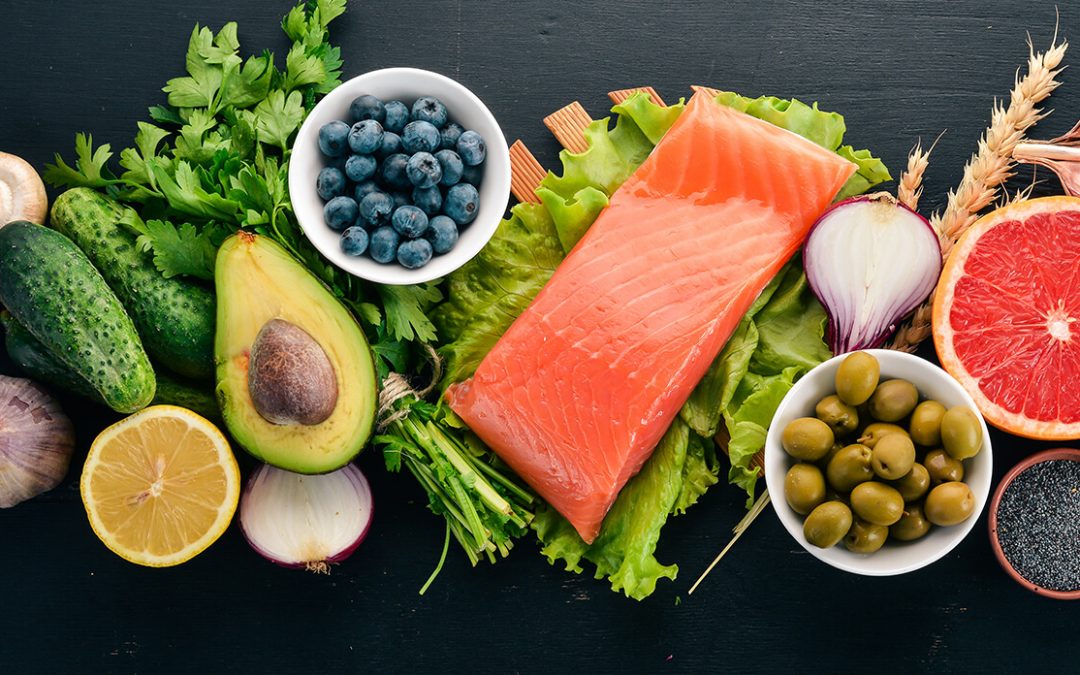We have received many emails from people asking what they can do immediately to manage their autoimmune condition. The science can be confusing and complex, especially to the person with Hashimoto’s hypothyroidism who also suffers from brain fog, fatigue, and some loss of cognitive function.
What people frequently fail to realize is that underlying all of the more complicated scientific approaches is the most important foundation of all—your diet.
Autoimmune disease and leaky gut create a vicious cycle
A person suffering from autoimmune disease invariably has gut issues. The more severe the autoimmune disease the more severe the gut issues, and vice versa. In a self-perpetuating vicious cycle leaky gut flares up autoimmune conditions, which in turn further damages the gut lining.
Stricter diet often necessary
Isn’t the elimination/provocation diet in the book severe enough? Now an even stricter diet? It became clear, based on the research and the experience of many people, that a more stringent approach is often necessary. The diet must be very basic and simple so as not to trigger inflammation in the intestines and further worsen leaky gut and autoimmune flare-ups.
This diet can be followed from 10 to 60 days or longer. Some like to follow it for a short time after accidentally eating gluten, or splurging on too many sweets at a wedding or holiday party. Some follow it longer for extensive repair. Others are happy to make it a way of life because it allows them to feel and function their best.
The literature identifies nutritional and herbal compounds that can facilitate your gut-repair progress, which I will introduce in the second edition of the thyroid book, or which your practitioner can help you with. However this diet is powerful therapy on its own.
We also like the new book The Plant Paradox, By Dr. Steven Gundry to assist in this stricter type diet.
The autoimmune gut repair diet
The goal of this program is remove immune triggers from your diet that promote inflammation and yeast overgrowth in the gut, and intestinal permeability. By calming inflammation in the gut, you will be able to better calm inflammation throughout the body and brain, including autoimmune flare-ups.
Focus on ample vegetables, essential fatty acids (such as from olives, olive oil, and fish), and fermented foods to support healthy gut flora.
Eat frequently enough to avoid the energy crashes of low blood sugar—do not let yourself get hungry, and stay hydrated with plenty of fresh, filtered water.
It’s vital to strictly avoid the foods on the “Foods to avoid” list. Even just a small snack or a bite of these foods can trigger an immune reaction, inflammation, and an autoimmune flare-up. The cravings will pass quickly, especially as you start to feel and function better.
This diet is powerful on its own, however to boost the repair and recovery effects, please work with a qualified practitioner who understands the connections between gut health and the brain, immune system, and endocrine system. He or she can provide you with proven nutritional compounds that have been shown to significantly aid the process of repair and recovery and unwind self-perpetuating inflammatory cycles in the gut.
Foods to eat
When confronted with this diet the first thing people ask is what can they eat. In fact you’ll be eating the way people ate for most of human history—there’s plenty of food that doesn’t come from a factory or an industrialized farm. Of course, if you have an intolerance to any of these foods, don’t eat it just because it’s on this list.
- Most Organic Vegetables: including anise, artichoke, asparagus, beets, bok choy, broccoli, cabbage, carrots, cauliflower, celery, chives, cucumbers, garlic, kale, kohlrabi, leeks, lettuce, mustard greens, onions, parsley, radishes, rhubarb, shallots, spinach, squash, sweet potatoes, water chestnuts, watercress, yams, zucchini.
- Fermented foods: sauerkraut, kimchi, pickled ginger, fermented cucumbers, coconut yogurt, kombucha, water kefir, etc. You will probably need to make your own or buy one of the few brands that are genuinely fermented and free of sugars or additives. Also, search for information about anaerobic fermented foods in air-tight containers. These ferments do not produce histamines that some people react to (including rashes, digestive upset, inflammation) in aerobic, or open, ferments typically using mason jars.
- Meats: including beef, chicken, fish, lamb, turkey. Fish should be ocean caught with a low mercury content. Swordfish, most tuna, and king mackerel are very high in mercury. Select hormone-free and antibiotic-free chicken, turkey, and lamb. Select beef that is grass fed, hormone free, and antibiotic free. Best choice are grass-fed and pastured meats from a local farm. Second best is organic. Avoid factory-farmed meats that contain antibiotics and hormones.
- Low Glycemic Organic Fruits: including apples, apricots, avocados, berries, cherries, grapefruit, lemons, oranges, peaches, pears, plums.
- Coconut: including coconut butter, coconut cream, coconut milk, coconut oil, unsweetened coconut flakes, unsweetened coconut yogurt.
- Noodles: shirataki yam noodles (sold in Asian grocery stores). Avoid the noodles that also contain tofu.
- Herbs and Spices: including basil, black pepper, cilantro, coriander, cumin, garlic, ginger, lemongrass, mint, oregano, parsley, rosemary, sage, sea salt, thyme.
- Other: apple cider vinegar, herbal teas, olive oil, olives
Foods to avoid
- Sugars: including agave, candy, chocolate, corn syrup, fructose, high fructose corn syrup, honey, maple syrup, molasses, sucrose, coconut sugar, etc.
- High Glycemic Fruits: including bananas, canned fruits, dried fruits, mango, pineapple, raisins, watermelon.
- Grains: including amaranth, barley, buckwheat, bulgur, corn, couscous, kamut, millet, oats, quinoa, rice, rye, spelt, wheat, wheat germ.
- Nuts and Seeds: including almonds, peanuts, sunflower seeds, sesame seeds.
- Gluten-Containing Compounds: including barbecue sauce, binders, bouillon, brewer’s yeast, cold cuts, condiments, emulsifiers, fillers, chewing gum, hot dogs, hydrolyzed plant and vegetable protein, ketchup, soy sauce, lunch meats, malt and malt flavoring, malt vinegar, matzo, modified food starch, monosodium glutamate, nondairy creamer, processed salad dressings, seitan, some spice mixtures, stabilizers, teriyaki sauce, textured vegetable protein.
- Dairy Products and Eggs: including butter, cheeses, cow milk, creams, frozen desserts, goat milk, margarine, mayonnaise, sheep milk, whey, yogurt (except coconut).
- Soy: including edamame, miso, soy milk, soy protein, soy sauce, tempeh, tofu.
- Fungi: edible fungi and mushrooms.
- Alcohol: all alcohol.
- Beans and Legumes: including black beans, lentils, peanuts, peas, pinto beans, soybeans.
- Nightshade Foods: including eggplant, paprika, peppers, potatoes, Tabasco® sauce, tomatillos, tomatoes.
- Other: canned foods, coffee, processed foods.
Autoimmune hypothyroidism diet recipes
This diet can seem daunting at first, and planning is essential to success. You must have the right foods on hand at all times. It is difficult to find recipes that accommodate all the restrictions, however I have found an online menu planning service that provides five weeks of menus and shopping lists. They are created by Sarah Schatz of Allergy-Free Menu Planners.
Also, there is a new cookbook on the market geared toward this diet called the Autoimmune Paleo Cookbook by Mickey Trescott, developed to meet all the criteria of this diet by someone who follows it herself.
Many embarking on this diet are entering new territories of food. You may need to shop at different stores or order things online.
Why no grains or legumes?
Some people with Hashimoto’s give up gluten and feel only marginally better. Many practitioners have found in these cases a diet free of grains, starchy vegetables, legumes, and most sweeteners may be necessary. This type of diet, called a monosaccharide (single sugar) diet, is more commonly known today as the Gut and Psychology Syndrome (GAPS) diet, or the Specific Carbohydrate Diet (SCD). It is based on consuming a diet free of foods that contain disaccharides or polysaccharides, more complex sugars and carbohydrates, such as those in all grains, most beans, and most sweeteners. These complex sugars feed harmful bacteria in the small intestine that prevent its repair or proper function.
Some foods can cross-react with gluten
Grains and legumes present problems for other reasons. Research has shown that many gluten-intolerant people cross-react with other foods. In other words, their body erroneously recognizes other foods as gluten and reacts accordingly. Not surprisingly, most grains fall into the category of top 24 foods most often to cause cross-reactivity, including less common ones as amaranth and quinoa.
Other common cross-reactive foods include dairy, chocolate, sesame, and instant coffee.
Corn
I tell all my gluten-free patients to avoid corn, even though this contradicts the advice on many gluten-free websites. The gluten protein in corn is similar enough to that in wheat and wheat-like grains that it can provoke an immune response. Also, corn has been bred over the years to resist pests. Unfortunately this bred into corn a compound called fucosamine, which is carcinogenic.
Lectins in grains and legumes
Grains and legumes are also high in lectins. Lectins have been shown to degrade the intestinal barrier. Once in the bloodstream they may bind to insulin receptors and leptin receptors (leptin acts in concert with insulin to control appetite). Some believe lectins may also have the ability to desensitize these receptors, thus contributing to insulin resistance and leptin resistance.
For this diet to be successful it’s extremely important to pay attention to blood sugar symptoms, keep blood sugar stable, and be aware of which foods trigger your symptoms. These are always good basic guidelines with which to start whether you are waiting to work with a practitioner or are going it alone.
Call our office to get more information on what dietary changes you can make to improve your autoimmune condition.
Contact us today to get your gut testing underway!




